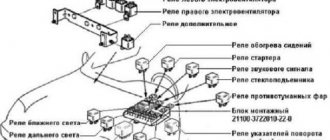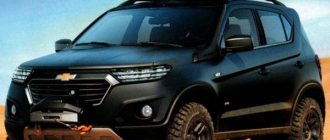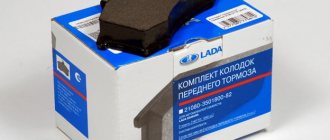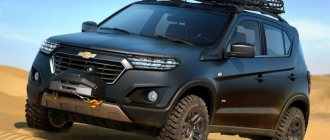The Russian automobile industry does not particularly please consumers with the quality of its products. However, when it comes to buying an inexpensive car that can overcome any obstacles and off-road conditions, the Lada is one of the first options that our car enthusiasts pay attention to. In this situation, they most often prefer two models - Niva and Niva Chevrolet. Everyone tries to compare their options to choose the best SUV option at an affordable price. Today we will also compare these two models so that you have as few questions as possible.
Why are they compared?
Each of the models is based on almost the same filling. At one time, Chevrolet was conceived as the second generation of Niva. But the plant did not have the money to develop some elements, so only the body was among the new items in the new model. The whole base was practically the same, with only a few minor modifications.
Conclusion
These two SUVs have a lot of other advantages and disadvantages, I tried to highlight the main ones. Write in the comments what else is different about these cars. From all of the above, we can draw the following conclusion: If you need a car primarily for asphalt with relatively rare off-road forays, then the Chevrolet Niva will be preferable. If you need to go off-road more often, then a regular Niva is better suited. In addition, it is cheaper when it comes to used cars. The difference in the cost of the new Lada 4×4 and Chevrolet Niva is not so significant.
Motors
Each of the cars has a 1.7-liter 4-cylinder engine under the hood that runs on gasoline. The pedigree of this engine dates back to “ancient times”, when the VAZ-2101 engine just appeared on the market. Each of the units has distributed injection and falls under EURO-5 environmental standards. The last major engine upgrades were carried out 11 years ago. Then a small “restoration” of the engines of each model took place. The changes concerned the valve levers and the timing belt tensioner.
At first glance, it seems that the engine is simply identical, because they have an interchangeable block, head, piston group, and crankshaft. But to be more precise, the VAZ-2123 engine, which is in the Chevrolet, is considered more modern and modernized.
The 23rd has a significantly different oil pan; the engine mounts are located in different places. The fact is that the front suspension gearbox on a Chevrolet is not mounted to the engine, like in a 4x4, but is separated from it. The generator is located on the top of the engine, the power steering pump goes to the bottom. All this became possible because Chevrolet’s spare tire is not located under the hood, but “moved” to the rear door. At the same time, the motor power differs slightly. According to the passport, “Shnivy” has 80 horsepower, and the “ancestor” has 3 “horses” more.
Pros and cons of the regular Niva compared to the Chevy Niva
Let us highlight the characteristic features relating to both the 21st Niva and subsequent models VAZ-21213 and VAZ-21214. We will not consider the Long Niva (VAZ-2131), pickup truck (VAZ-2329) and other modifications. So, let's start with the undeniable advantages of the regular Niva compared to the Shevik:
- Patency . Due to the short wheelbase, the 21st model has better geometric cross-country ability.
- Price . In the same condition, a regular Niva will be 1.5-2 times cheaper than a Shevik.
- Availability and low cost of spare parts. Especially for body parts.
- "Psychological passability" . An ordinary Niva is not so scary to be scratched or slightly dented, unlike a Chevrolet.
- The best predisposition for off-road tuning .
Now let's list the disadvantages of the 21st Niva compared to the Chevrolet Niva:
- Low level of comfort . Noise, vibration, lack of power steering (on old Nivas), uncomfortable driving position.
- Outdated design . Although this is a controversial point, because the design of an ordinary Niva is recognizable all over the world, which cannot be said about the Shniva.
- Poor aerodynamics.
- Poor handling on the highway.
- Cramped interior. This includes an uncomfortable seating position in the back row and a small trunk.
Everything is clear with the advantages and disadvantages of the regular Niva compared to the Shevik. Let's move on to the Chevrolet Niva.
Transmission
Structurally, they are very similar, since the drive is made using the same components and parts. But there are still small nuances that distinguish the transmissions of each model. The Shniva has 3 transfer case mounting supports, while the earlier model only had two. The driveshafts, both rear and front, are the same for the cars. But the intermediate shaft, which connects the gearbox and the gearbox, is slightly elongated in the Chevrolet Niva.
Well, the main difference between the transmissions is that the Chevrolet has 2 control levers, while the 4x4 has three. In Chevrolet, the range control lever and the differential lock lever are combined into one unit - a single-lever design. Niva's control scheme has not changed since the first VAZ-2121 appeared, i.e. since 1977.
How to use it correctly?
There is a diagram on the shift lever. To engage a downshift, you need to move the lever to the right, up. To lock the differential, pull it all the way to the left. There are also Latin letters on the lever. So, L is a low gear, N is neutral, and H is high. Now let's find out how to use all this so that we don't have to repair the mechanism and change the transfer case bearings.
Modernization
Each of the cars was modernized, a steering wheel, windows and doors appeared. But seriously, improvements were most often aimed at reducing noise in the cabin and reducing vibrations while driving. That is, we can say that manufacturers tried to increase the level of comfort. Although, frankly speaking, comfort and the Russian auto industry are most often antonyms. But this is all lyrics, let's get back to our cars. Since Chevrolet is a younger car, it was ahead of its progenitor in many nuances.
For example, the mounting points for the rear axle in Chevrolet were immediately optimized when compared with the original. If we talk about the regular Niva, then this optimization appeared on the Lada 4x4 relatively recently - only after it was tested on the Shniva and received laudatory reviews from consumers.
Also, CV joints in cardan shafts on the Niva have been installed since 2010, but they began to be installed on 4x4s only 3 years later. Until 2013, it used “old school” hinges.
In addition, other suspension elements were redesigned, a stronger clutch, a vibration damper and much more appeared, which can be listed for a very long time.
The most interesting thing is that during this time the way of painting the car has changed. Over the years, our brave automakers have switched from anaphoresis to cataphoresis. Anticorrosive treatment has also been improved. The interior and exterior of the car have improved slightly: the radiator grille has shone with new colors, the mirrors have become larger than before, and the door upholstery has changed. But air conditioning on the Lada 4x4 appeared only in the middle of this decade - in 2014. Chevrolet began installing it 8 years earlier. Moreover, the central lock, which is used on the Shniva, is not present on the Lada to this day.
It is also worth mentioning that in addition to the refreshed appearance, the number and strength of vibrations has decreased. However, both one and the other model still need to continue to be modernized.
Overcoming a deep puddle
Often a dispute arises between motorists about how best to cross a ford with a transfer case. Some people prefer to “fly” into a puddle from acceleration, others prefer to downshift. If you get into a mud pit, there is a high risk of water hammer - water gets into the cylinders through the filter, and the engine “chokes.” To exclude this, many install a special snorkel. But you can do without it. A deep puddle should be overcome in second low gear. This is done so that in case of trouble (when the car starts to fail) you can switch to first gear in time and not stall. If you enter the water from acceleration (which is a better decision), remember that the wheels may get stuck in the middle of the journey. The engine power is not enough to turn the wheels - the car stalls, and the engine experiences a hydraulic shock.
Body and safety
Early 4x4 models had only 3 doors, but the Chevrolet was immediately conceived as a five-door. The second car remained in this form, if you do not take into account some experimental models that never became production. But the 4x4 had several body variations. For example, over the years the length changed, single and double cabins were produced...
If we talk about safety, then initially everything was very sad. In 2002, both models were tested, and using a method that completely copied EuroNCAP, the Shniva received only 1.6, and the Niva 0 points. It was sad; no one expected such a failure. But time passed, the cars improved, and new models were able to get 12.5 points each (thanks to airbags, ABS and belts).
Production
If you are hesitating between a VAZ Niva or a Chevrolet Niva, then you need to understand that both vehicles are produced in our country, in Tolyatti.
True, the first option is made at the facilities of AVTOVAZ, while Chevrolet is manufactured at the GM-AVTOVAZ plant. But the components (engines, chassis, bodies, etc.) are supplied from the same AVTOVAZ. The quality is about the same.
Maintenance
In this aspect, “Shniva” is significantly ahead of its “ancestor”. As numerous tests have shown, Chevrolet's first problems appeared only after 15 thousand kilometers, but the owner of a regular Niva will look into the service after 9 thousand kilometers. If we talk about prices for parts, they are almost identical.
Which is better for driving around the city?
When comparing two cars, it's worth finding out how both cars behave on the highway . In this regard, Chevrolet wins in almost all respects. An example is the following:
- Better insulation in the cabin . Niva is classified as a higher class, so higher quality materials are used for finishing. When driving on the highway, there is simply a terrible hum in the Lada's cabin: the engine, tires, transfer case. Therefore, we cannot talk about comfortable movement over long distances.
- The shorter wheelbase and lighter weight of the Lada guarantee higher cross-country ability, but problems arise when driving on the highway or within the city. This is associated with a serious decrease in stability. Therefore, the 2121 model must be constantly kept on the road; a strong gust of wind can throw the car to the side.
- Niva is much softer . This is due to the modified suspension. At the time of the test, it performs better when turning.











